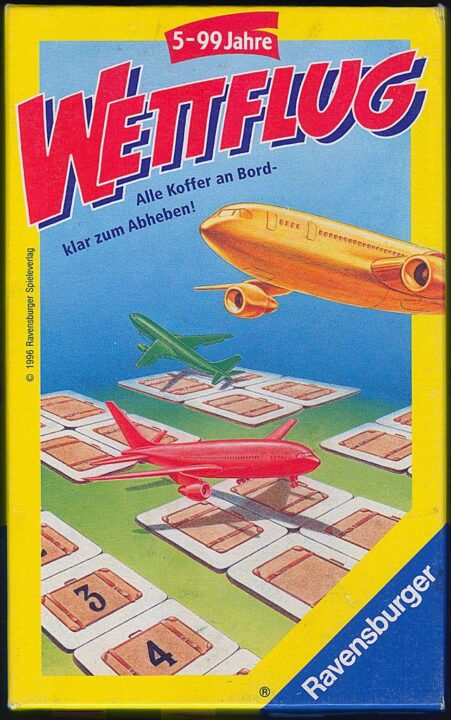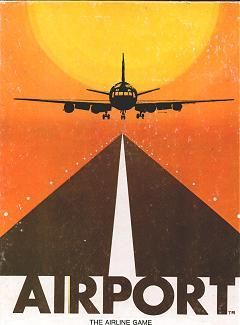Ever wondered what it feels like to run an airport, but without the stress of actually landing a plane or convincing security to go easy with your toothpaste? Well, you’re in luck because I recently got my mitts on a copy of Airport, and after several rounds with my friends (plus a minor argument over who gets to be the baggage inspector), I’m ready to give you the lowdown in this review. Grab your boarding passes—let’s see if this one takes off or if it ends up grounded at the gate!
How It Plays
Setting up
Lay out the airport board smack in the middle of your table (and move Aunt Linda’s teacup out of the way). Each player grabs their colorful planes and matching player board. Shuffle the destination cards and money tokens. Hand out starting cash, unless you want to simulate airport bankruptcy, which is a different game entirely.
Gameplay
On your turn, pick a flight card or send a plane to a gate. You’ll want to snag destinations before your friends do (especially Dave, who always swipes the best ones). Collect money and cards, and watch out for random events like weather delays or surprise inspections. Block other players if you’re feeling sneaky—they’ll forgive you by Christmas.
Winning the game
The game wraps up after the last flight card is claimed or everyone’s planes have taken off. Count up your money, points from destination cards, and any bonus tokens. Whoever rakes in the most, wins! If there’s a tie, the player with the most unspent peanuts wins bragging rights (not official, but it should be).
Want to know more? Read our extensive strategy guide for Airport.
How Does Airport Take Off? Gameplay Flow and Player Interaction
Let’s talk about the heart of Airport: how the game actually feels to play, and how you and your friends will (attempt to) outmaneuver each other at the table. When I brought Airport out for its maiden flight, I expected chaos. It’s a game about running airports, after all. And chaos? Oh boy, it parks right at gate one.
Gameplay in Airport moves in neat rounds, which sounds all smooth and orderly—just like a real airport. Except we all know real airports are more like poorly organized ant colonies. The trick is you never get a moment to relax, because you’re juggling passengers, building terminals, and (my favorite part) sneakily blocking friends from landing planes where they want.
You’ll take turns placing tiles, rerouting flights, and making sure your airport runs smoother than my last attempt at TSA PreCheck. Here’s the hook: most of your best moves also mess up someone else’s master plan. If you like games where you can talk trash and cackle as you steal someone’s gate at the last second, Airport delivers big time. But if you’re the sensitive sort, be warned—your runways will get hijacked. It’s not mean-spirited but it will have you plotting revenge while pretending you’re just interested in your next boarding group. The game’s pace stays brisk. No one just sits around waiting to take off. Even when it’s not your turn, you’re watching what happens, ready to pounce next.
Player interaction isn’t just encouraged, it’s the fuel for the whole game. You can’t just build your own peaceful little airport and ignore everyone. The tension makes every round engaging, and kept my group talking (and laughing) for hours.
Next, I’ll tell you if the game’s theme and plastic airplanes are as good as its boarding process. Spoiler: one of them is shinier than the other.

Theme and Component Quality: Welcome to Airport Chaos
Let me start by saying, the theme in Airport is loud and clear. You are not running a quiet, sleepy little airstrip. Nope—you are thrown into the wild world of an international hub at rush hour. I felt the panic of a gate agent with 100 passengers and only one working printer. The artwork does a fine job, with cartoon planes, stressed-out passengers, and that grumpy guy who always sets off the metal detector (he looks a lot like my uncle Gary, actually).
The board looks like a real airport layout, with gates, runways, and even a food court that always seems to have slightly crumpled napkins printed on it for realism. The components feel solid—nothing flimsy or easy to lose, even with my cat “helping” the first playthrough. The little plastic planes are, honestly, adorable. They’re chunky and fit well on the board. The tickets, passenger meeples, and baggage claim tokens all have bright colors and cartoony charm. My group spent a shameful amount of time lining them up for photos like we were at a mini Terminal 5.
Card stock is decent, though I wish the boarding pass cards were a touch thicker—someone always manages to get snack grease on at least one. The airport’s overall vibe really soaks into every component, making it feel less like you’re just moving tokens and more like you’re surviving a day at Heathrow.
Next up, let’s talk about how easy—or tricky—it is to become an airport aficionado, as we unpack the game’s rulebook and learning curve!
Are the Rules of Airport as Clear as a Runway?
I’ve played my fair share of games that make you want to rip up the rulebook and just start making stuff up. Thankfully, Airport doesn’t reach that level of chaos. The instructions are laid out with step-by-step pictures and some laughably literal examples. My first read-through didn’t make me want to weep, which is actually saying a lot (I once needed a YouTube video to set up Connect Four right).
My friends and I got Airport up and running in maybe fifteen minutes. There are some moments where you wonder, “Wait, can I stack a mechanic and a tourist in the same terminal?” but the rulebook actually answered most odd questions we came up with. I think even my Uncle Dan could pick this one up, and he still calls Mario Kart ‘Mario Cart’.
The learning curve is gentle. You’re not going to get left behind if you don’t do deep strategy from the get-go. After a single round, everybody was playing without checking back to the rules. My neighbor’s eight-year-old kept shouting the phase names, so I’d say it’s good for kids too (as long as you’re okay with airport-related yelling).
But beware: if you’re one of those heavy strategy folks, you might find Airport a bit on the lighter side. Still, no need for a two-hour rules explanation—just shuffle, play, and get ready for some baggage-related chaos.
Next time, I’ll grab my pilot hat and talk about how much of Airport depends on skill, luck, or if it’s all just turbulence!
Is Airport a Game of Skill, Luck, or Something in Between?
Alright, let’s talk about the real elephant in the terminal: does Airport reward clever strategy, or are you just hoping the baggage doesn’t get lost along the way? Well, in my group’s case, it was a bit of both. There are some decent choices in Airport, like when to swoop in for those valuable flight cards, and when to block your opponent’s route like a mischievous air traffic controller with a grudge. But, I’ll be honest, luck packs its suitcase and checks in early for this one.
So much of your fate in Airport comes down to the draw pile. I saw my friend Becky—who plans meals a month ahead—draw nothing but peanuts (figuratively) while my cousin Tim, champion of random guesses, snagged three bonus flights in a row. Sometimes you get the route you need, sometimes not. And don’t get me started on those weather cards! I once lost an almost guaranteed win because of a thunderstorm and a rotten card flip. It’s fair to say this isn’t chess. It’s more like trying to guess which overhead bin will actually hold your bag.
Now, that luck does mean the game stays breezy and everyone’s in it right to the end. But if you’re a diehard strategist, Airport might leave you circling the runway. For casual groups, though, it’s laugh-out-loud fun. Would I recommend Airport? For families and mixed-skill tables: yes, get your boarding pass. But for anyone chasing pure skill? You might want a different flight!
Conclusion
Well, that’s wheels up on my Airport review! After taxiing through all the chaos, I can say it’s a great game for families and friends who don’t mind a little randomness in the journey. The theme and pieces are spot on, the rules are clear, and there’s never a dull moment as you block each other’s flights. But if you’d rather win with skill than cross your fingers, this might not be your runway. Thanks for reading, and may your next layover be short and your board games long!


